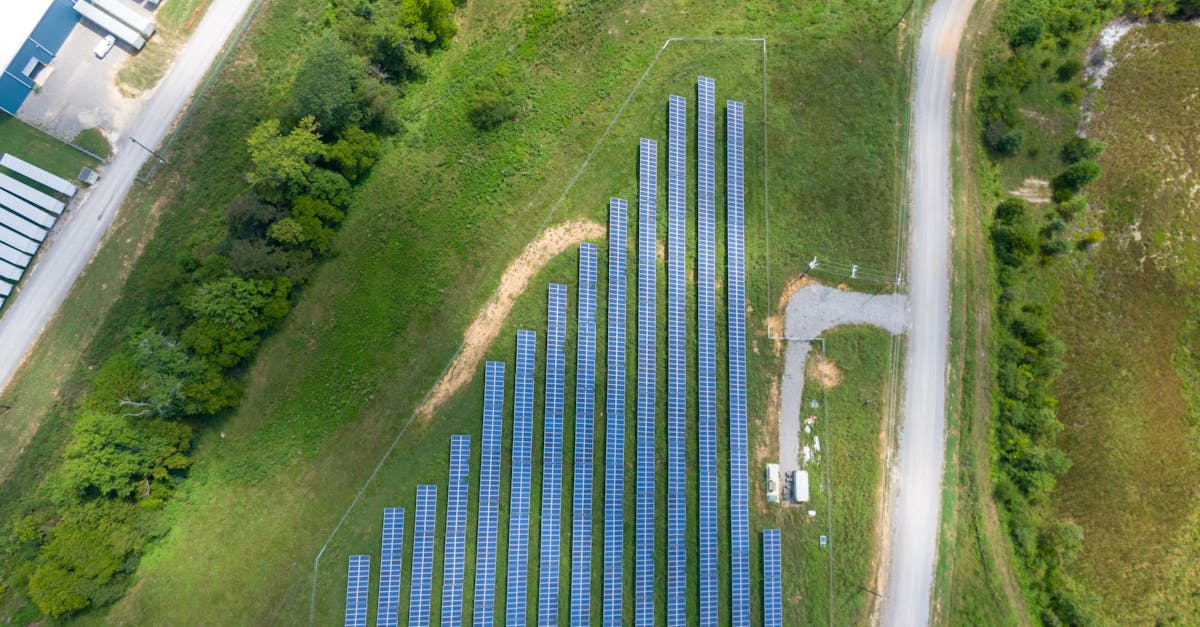
How to Maintain Your Solar Panels Effectively
Inspecting Solar Panels for Damage
Regular inspections of solar panels are crucial for ensuring optimal performance and longevity. Visually examining the panels for any signs of wear and tear can help identify potential problems before they escalate. Look for cracks, chips, or discolouration on the glass surface. Pay attention to the mounting equipment as well; loose brackets or rust may indicate issues that need immediate attention.
In addition to physical inspection, it's important to check for any debris that might obstruct sunlight. Leaves, bird droppings, or dirt build-up can significantly affect energy efficiency. Cleaning the panels gently can enhance their performance. Keeping an eye on the surrounding environment is also necessary, as overhanging branches or nearby structures might cast shadows on the panels, reducing their overall effectiveness.
Common Issues to Look For
Regular inspections of solar panels can reveal several common issues that may hinder their performance. One significant concern is dirt accumulation on the panels, which reduces their efficiency by blocking sunlight. Environmental factors such as bird droppings, leaves, and dust can lead to decreased energy output. Moreover, cracked or broken panels may occur due to weather conditions or physical impact. These damages can compromise the overall system.
Moreover, wiring problems can arise, affecting the connection between the panels and the inverter. Loose connections or frayed wires can lead to electrical faults. Additionally, inverter malfunctions may result in irregular energy production, prompting further investigation. Identifying these issues early can help maintain optimal performance and extend the lifespan of the solar energy system.
Professional Maintenance Services
Regular upkeep of solar panels often requires expertise beyond what the average homeowner possesses. Professional maintenance services can provide essential assistance in identifying potential issues that may not be visible during a standard inspection. These experts use specialised tools and techniques to thoroughly assess the system, ensuring it operates at peak efficiency.
Engaging professional services can also extend the lifespan of your solar panels. Qualified technicians are trained to detect and rectify problems before they escalate, preserving the integrity of the installation. Additionally, they can offer valuable advice on optimising energy output. Balancing the investment in professional maintenance with the long-term benefits can lead to significant savings and improved performance.
When to Hire a Professional
Regular inspections can help identify minor issues before they escalate. However, certain situations require the expertise of professionals. If there are visible signs of damage such as cracks or discolouration, immediate assistance is advisable. Additionally, if the performance monitoring system shows significant drops in energy output, this may indicate underlying concerns that necessitate professional evaluation.
It is also prudent to seek help after severe weather events like storms or hail. Such incidents could compromise the integrity of your solar panels. A professional can carry out a thorough examination and offer solutions that might not be apparent to the untrained eye. Engaging experts ensures that any necessary repairs or adjustments are conducted safely and effectively, ultimately prolonging the lifespan of your solar system.
Monitoring Solar Panel Performance
Tracking the performance of solar panels is essential for ensuring their efficiency and longevity. Regular monitoring can reveal trends in energy production, helping to highlight any deviations from expected performance levels. Homeowners can use various solar monitoring systems that provide real-time data on energy output, allowing them to assess how well their system is operating compared to previous periods.
Understanding energy production metrics is crucial for evaluating the success of a solar installation. Factors such as the amount of sunlight received, energy conversion efficiency, and shadowing from nearby objects can impact overall performance. By comparing actual energy output with forecasts, homeowners can identify potential issues early and make informed decisions regarding maintenance or upgrades.
Understanding Energy Production Metrics
Energy production metrics provide essential insights into the performance of solar panels. These metrics typically include energy output measured in kilowatt-hours (kWh), the system's efficiency percentage, and the performance ratio. Monitoring these figures allows homeowners to gauge whether their solar panels are operating effectively and producing the expected amount of energy based on their installation size and local weather conditions.
Regularly recording and analysing these metrics can help identify trends over time. A significant drop in energy production may signal underlying issues, prompting further investigation. Understanding these patterns also assists in evaluating the return on investment of the solar system, ensuring that energy generation aligns with anticipated savings on electricity bills.
FAQS
How often should I inspect my solar panels for damage?
It is recommended to inspect your solar panels at least twice a year, ideally in spring and autumn, to identify any potential issues before they become serious.
What are some common issues I should look for during my inspection?
Common issues include dirt and debris accumulation, cracks in the panels, loose or damaged wiring, and signs of corrosion or rust.
When is it advisable to hire a professional for solar panel maintenance?
You should consider hiring a professional if you notice significant damage, your panels are not performing as expected, or if you are uncomfortable performing the maintenance yourself.
How can I monitor the performance of my solar panels?
You can monitor your solar panel performance by using a solar monitoring system, which tracks energy production metrics and alerts you to any performance declines.
What are the key energy production metrics I should understand?
Key metrics include energy output (measured in kilowatt-hours), efficiency rates, and performance ratio, all of which help you assess the effectiveness of your solar panel system.
Related Links
What to Expect from Repair Services in StaffordshireWhat to Do When Your Solar Panels Malfunction
Review of Solar Panel Repair Services in Staffordshire
Roundup of Best Practices for Maintaining Solar Panels
10 Common Issues with Solar Panels and How to Solve Them
Historical Overview of Solar Panel Maintenance